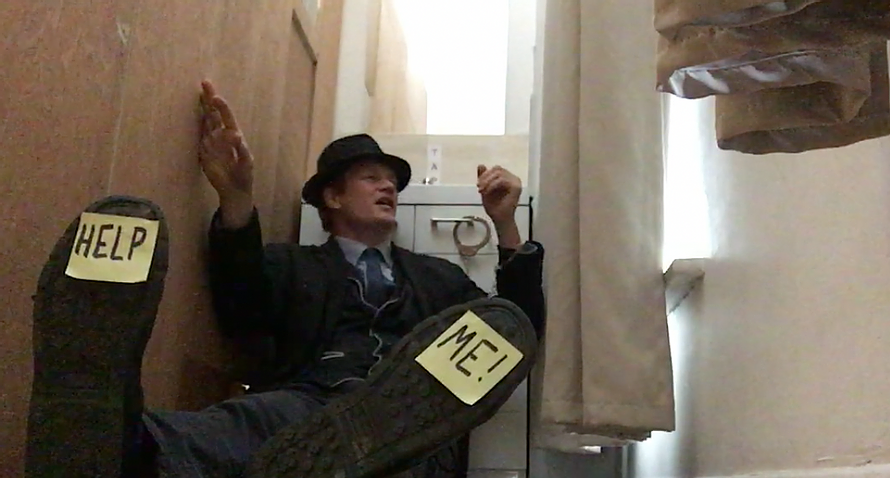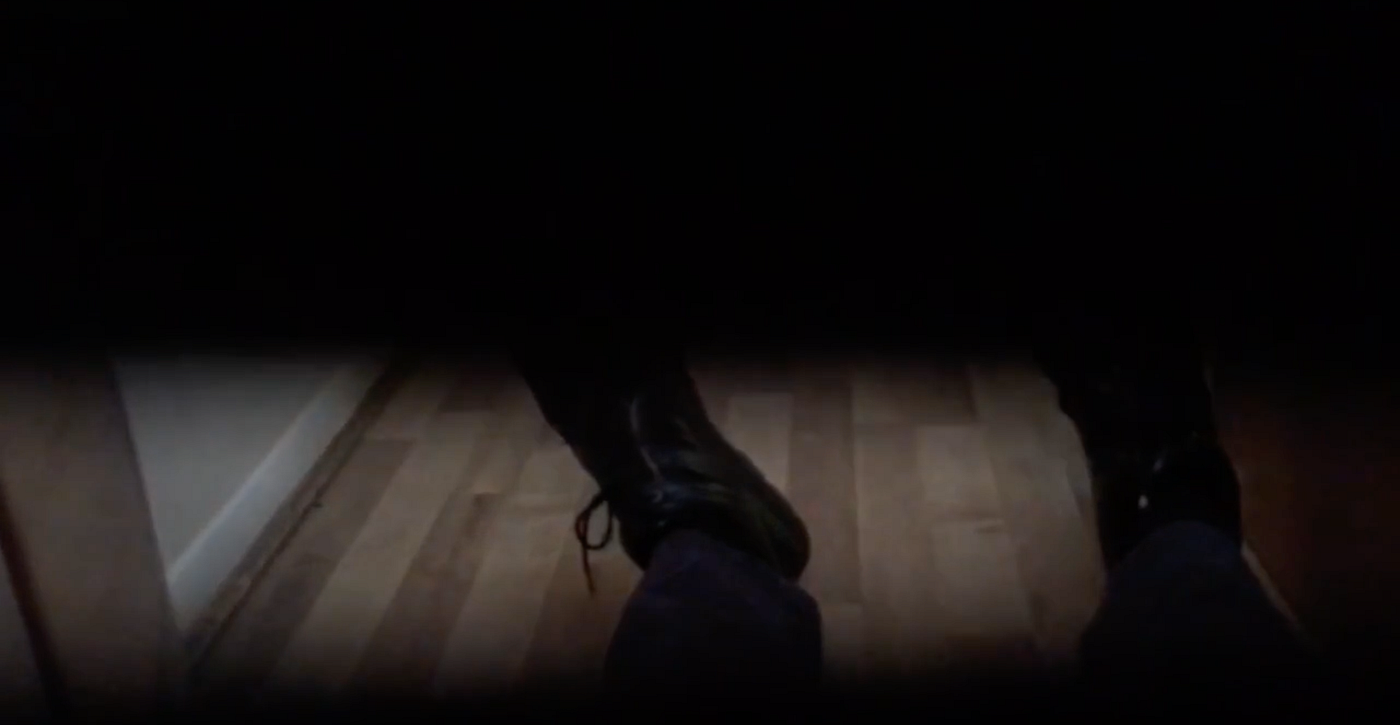Let Your Inner Spy Out with Agent November’s ‘Virtual X-Caper’ (Review)
The immersive gaming company creates a clever online escape room experience


Dramatis Personae:
Shelley Snyder — NoPro London Curator
Edward Mylechreest — NoPro NYC Correspondent
Note: Spoilers abound.
Shelley: Having previously reviewed Agent November’s work, I was curious and excited to see that they’d made the leap to online performance with Virtual X-Caper. Graciously, they found time in their busy holiday schedule to invite a cozy group of NoPro players in to experience how they’ve made the jump from in-situ gameplay to the digital realm.
Edward: For someone completely new to the company, and unaccustomed to the company’s programming in “regular” times, I was excited to take part in a new experience and enjoyed going in completely blind to this remote adventure. Unfortunately, some of our teammates had some tech issues during the experience (not the fault of the experience), but this special agent was able to fully partake in the virtual offering.
Shelley: That was me: the dreaded choked-bandwidth goblin (terror of the Age of Zoom) chose a really crummy time to crop up, so I had to take a backseat during the experience. Even so, it was still very engaging for a passive observer!
True to form, Agent November sends the team an introductory video (which does not self-destruct after watching) and early access to some of the materials before our session. Mostly, they’re mission briefs of the core characters — a couple of whom are mainstays in the “November-verse” — and some maps of a facility which will hopefully be useful later.
Edward: Our mission, if we choose to accept it (and we obviously did), is to help to navigate Agent November out of the clutches of the evil Marti Orri, who works closely with Robyn Yew, and Major X Ploe-Shun. (And there would be plenty of puns in Virtual X-Caper, alright.)
With our assistance, we could hopefully help guide our agent out of enemy territory and escape into freedom. A simple enough premise for an escape room, but, of course, with this being a remote experience, this particular escape would have to be particularly daring and technologically advanced.
Shelley: What struck me immediately was that this is the first Zoom performance I’ve seen that’s performed in first-person; we’re watching from the point of view of the prisoner we’re helping to escape. We never see his face, we just feed ideas and directions to him. The whole show has strong Hardcore Henry vibes; I loved it. I don’t own anything like a VR headset, so this realm of first-person control and performance is new ground for me.

Edward: In addition to working with our “in-person” agent, we were also expected to complete research tasks online, with in-world web sites and online newspaper pages to scroll through and interact with. For instance, a surprisingly detailed, if meme-obsessed web site helper bot provided, well, help in a time of dire need for our agent.
Shelley: Oh, man, the memes — it’s touches like this that really humanize a performance. We’re all stuck online all the time now, so it follows that the easiest way to inject humor into the format is to lean into it.
Our host is following our orders (albeit often intentionally incorrectly, to much amusement: it’s like learning to program a robot and watching it do exactly what you’ve said, not what you’ve meant), but he’s also performing a carefully choreographed dance. A large measure of scenic design in escape rooms is the use of perspective and light: some clues won’t reveal themselves unless the viewer is standing in the right place under the right conditions. Since we’re not physically in the room, our host has a responsibility to ensure he’s pointing the camera in such a way that we’ll catch and discover something that we might otherwise miss, but not to do this so overtly that we feel like we’re being railroaded through the clues.
It’s more complex than it appears, especially if he’s working with an audience that isn’t well-versed in escape rooms.
Edward: Luckily for us, the prison cell that Agent November has found himself isn’t particularly technologically advanced. The whole experience appears to be a rather low-budget affair, rather reminiscent of the forts and spaceships that kids might make out of cardboard boxes, complete with the mouth made bleeps and bloops when buttons are pushed. However, this doesn’t take away from the experience, or the well-crafted and imaginative puzzles, instead the design is encouraging an active imagination to help fill in the gaps. It all has a rather lovely homemade quality to it, which I found quite charming. It reminds me of an old-school Dr Who episode: the set design might be a little simplistic, but that doesn’t stop a great story from being told.
Shelley: I agree — just because a show is a bit home-baked, it doesn’t undermine everything else the performance has to offer. I was too busy laughing. Keeping an eye on the hour time limit, in addition to interacting with us and following our instructions, the host is also responsible for speeding up or slowing down the progress of a team. He wants us to succeed, but also doesn’t want us to get through too quickly. It’s a careful balancing act. However the narrative’s tongue-in-cheek writing and the actor’s dry sarcasm is enough that the intentional slow-downs aren’t perceived as frustrating to the audience; instead, they’re hilarious.
Edward: With a knowing wink to the video game industry, achievements and Easter eggs are also unlocked at times during our escape attempt. A pun-filled note may appear on our screen when certain actions (or inactions) are taken, producing a wonderful explosion of Zoom-based chuckles from our team. The entire sense of humor felt very British to me, and, well, really, rather silly. I loved it, and I am quite certain our whole team loved it too.
Shelley: In the age of self-isolation, I think there’s a lot of money (as well as the subsequent ethical questions around the ransom of personal exposure to the virus) to be made performing experiences on a person’s behalf; what suggestions does this raise in the realm of DoorDash and strapping a body camera on so that the customer can get the shopping experience as well? From Twitch to Patreon to OnlyFans, what revenues are yet to be tapped by turning the camera away from the performer’s face and completing the task to the audience’s directives?
Edward: In addition to that, I am pleased to say that Virtual X-Caper succeeded at bridging the gap between escape room and live theatre, all with a delightful comedic twist. Our team worked hard during Agent November’s escape, and our combined forces of will helped to mold the agency of our team and of our agent in a successful marriage of performance and game. I felt invested in the entire experience, and found myself eager to help our new found friend in his escape attempt.
It’s a great cocktail of ingredients: combine a charismatic performer with a great selection of imaginative puzzles; a simple but compelling narrative; and a dash of dry British wit. Shaken, not stirred (obviously), and Virtual X-Caper goes down a treat!
Virtual X-Caper is available now for teams of up to 10 people; tickets are £14 per person.